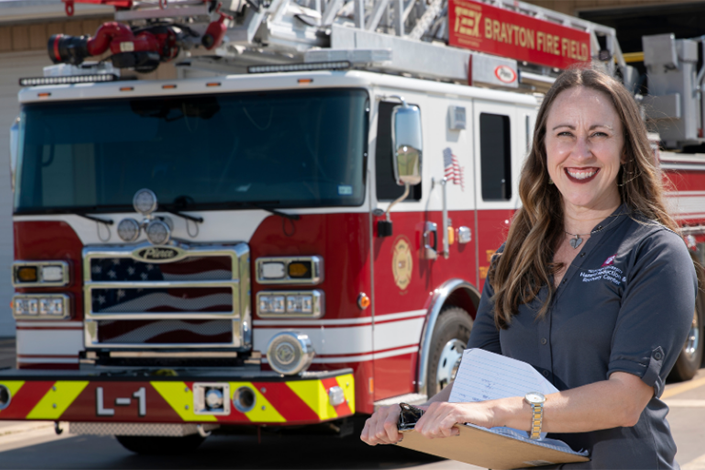Volunteer action: Study examines how groups respond to disasters

In the midst of a disaster, when emergency services are stretched thin, everyday people are rising up to help their neighbors in organizations that perform life-saving rescue and aid efforts using social media and other digital technologies.
Michelle Meyer, director of Texas A&M’s Hazard Reduction and Recovery Center, studies these volunteer groups. Her findings could help these groups and their communities come up with better ways to dispatch help, target resources to neighborhoods historically ignored, and do pre- and post-disaster planning and recovery for emergencies including hurricanes, floods, COVID-19 and future disasters.
Funded by National Science Foundation grants totaling nearly $650,000, Meyer is studying the evolution of these volunteer groups after disasters, how they use social media and technology to coordinate efforts and how communities can best harness philanthropic resources to help long-term, post-disaster recovery.
The eight volunteer rescue organizations Meyer and colleagues at Louisiana State University (LSU) are studying are often referred to as the Cajun Navy and assumed to be one organization. This movement of many groups include volunteers that sprang into action after hurricanes Katrina and Harvey to rescue thousands of people from flooding using their personal boats and, later, social media apps to organize rescue attempts.
“People who have boats have always gone out and rescued their neighbors,” she said. “But the 2016 Louisiana floods marked one of the first times people were posting their addresses on social media asking for help. Hurricane Harvey was similar.”
Meyer said it’s possible that these organizations, which disaster scholars call “emergent groups,” traditionally disbanded after disasters passed, but continue to exist now because of social media.
After Harvey, some of these rescue groups created formal nonprofit structures, trained members in emergency management systems, continued to aid in community needs, and coordinated their efforts using social media and various new apps.
“They use Slack, Zello (a walkie talkie app), Microsoft Teams, all these different apps. Some are building their own apps or helping startup rescue groups test theirs,” Meyer said. “Smartphones now allow for better real-time geolocation of people who are in a need and those who can help. You can track team members’ locations, which in a rescue situation is very important.”

